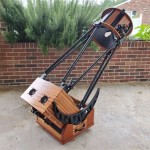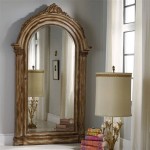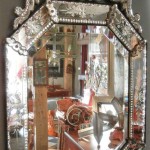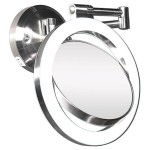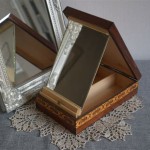Kids Room Mirrors: Reflecting Style and Functionality
Mirrors in children's rooms serve a dual purpose: they are both decorative and functional. Beyond their practical use for checking appearances, mirrors can enhance the room's aesthetic appeal, create an illusion of more space, and contribute to a child's development. Choosing the right mirror involves considering several factors, including safety, size, shape, and overall room design.
Safety First: Selecting Child-Friendly Mirrors
Safety should be the paramount concern when selecting a mirror for a child's room. Traditional glass mirrors pose a risk of shattering, creating sharp, dangerous shards. Opting for safer alternatives is crucial. Acrylic mirrors, also known as plexiglass mirrors, are an excellent choice. These mirrors are shatter-resistant and lightweight, significantly reducing the risk of injury. They are also generally less expensive than glass mirrors. Another safe option is tempered glass, which crumbles into small, relatively harmless pieces if broken. Regardless of the material chosen, ensure the mirror is securely mounted to the wall using appropriate hardware. Avoid placing heavy mirrors above furniture where they could fall and cause harm. Regularly inspect the mirror and its mounting for any signs of damage.
Size and Shape: Creating the Right Visual Impact
The size and shape of the mirror play a crucial role in the overall aesthetic of the room. A large, rectangular mirror can make a small room appear larger, while a smaller, more ornate mirror can serve as a decorative accent. Consider the available wall space and the existing furniture when choosing the mirror's dimensions. For younger children, a full-length mirror can be both fun and functional, allowing them to see their entire outfit. Circular or uniquely shaped mirrors can add a touch of whimsy and personality. In a shared room, providing individual smaller mirrors for each child can minimize potential conflicts and personalize their respective spaces.
Placement and Purpose: Maximizing Functionality
The placement of the mirror should be strategic, considering both its intended use and the overall room layout. A full-length mirror is best placed on a wall with sufficient clearance for a child to stand comfortably in front of it. Smaller mirrors can be hung above a dresser or desk, serving as a vanity mirror. In a play area, a strategically placed mirror can enhance imaginative play. For example, a mirror positioned near a dress-up corner can encourage creativity and self-expression. Mirrors can also be used to brighten a room by reflecting natural light. Placing a mirror opposite a window can maximize the amount of light entering the room.
Design and Style: Reflecting Personality
Mirrors offer a wonderful opportunity to express a child's personality and interests. Frames can be chosen to complement the room's existing décor, whether it's a colorful, playful theme or a more sophisticated, minimalist style. Consider frames made from sustainable materials like bamboo or reclaimed wood. For a personalized touch, consider a frame that can be decorated with photos, artwork, or other mementos. Decorative mirrors with whimsical shapes, like butterflies or animals, can add a touch of charm to a younger child's room. Involving the child in the selection process can foster a sense of ownership and pride in their space.
Maintenance and Care: Ensuring Longevity
Proper maintenance and care can extend the life of a mirror and maintain its appearance. Regular cleaning with a gentle glass cleaner or a damp cloth will remove dust and fingerprints. Avoid using abrasive cleaners, which can scratch the mirror's surface. Check the mirror's mounting periodically to ensure it remains secure. If the mirror is framed, inspect the frame for any signs of damage or wear. Teach children how to properly care for their mirrors, emphasizing the importance of gentle handling and avoiding rough play near the mirror.
Beyond Reflection: Developmental Benefits
Beyond their practical and aesthetic value, mirrors also contribute to a child’s development. For infants, mirrors can provide visual stimulation and help them develop self-awareness. As children grow, mirrors can aid in developing motor skills, coordination, and body image. Observing themselves in a mirror while dressing, dancing, or practicing facial expressions can enhance their self-confidence and self-expression. Mirrors can also be used as educational tools, helping children learn about reflections, symmetry, and spatial relationships. Integrating mirrors into play activities can foster creativity and imagination.

Contemporary Kids Room Mirror Glazonoid

Haus Projekt Children S White Wooden Free Standing Dress Up Mirror Handmade Dressing Kid Bedroom Furniture Girls Gift

This Fairy Tale Of A Kid S Room Used To Be Sunny Kitchen Kids Bedroom Decor Luxurious Bedrooms Diy

Mi Mirror Rabbit Shape Kids Floor

Magical Mirror With Tv 22 Circu Furniture

Mirror In A Child S Room Good Or Bad Idea

Mi Mirror Bunny Floor Kids Room

19 Round Colorful Pom Kids Mirror Pillowfort Target

Toddler Self Care Montessori Entry Mirror Kids Room Decor Shelf Entryway Weaning Blaire

Mirror Ideas For Kids Be Inspired By This Room Children Decoration To Find The Perfect Your Mirrors Diy Furniture


